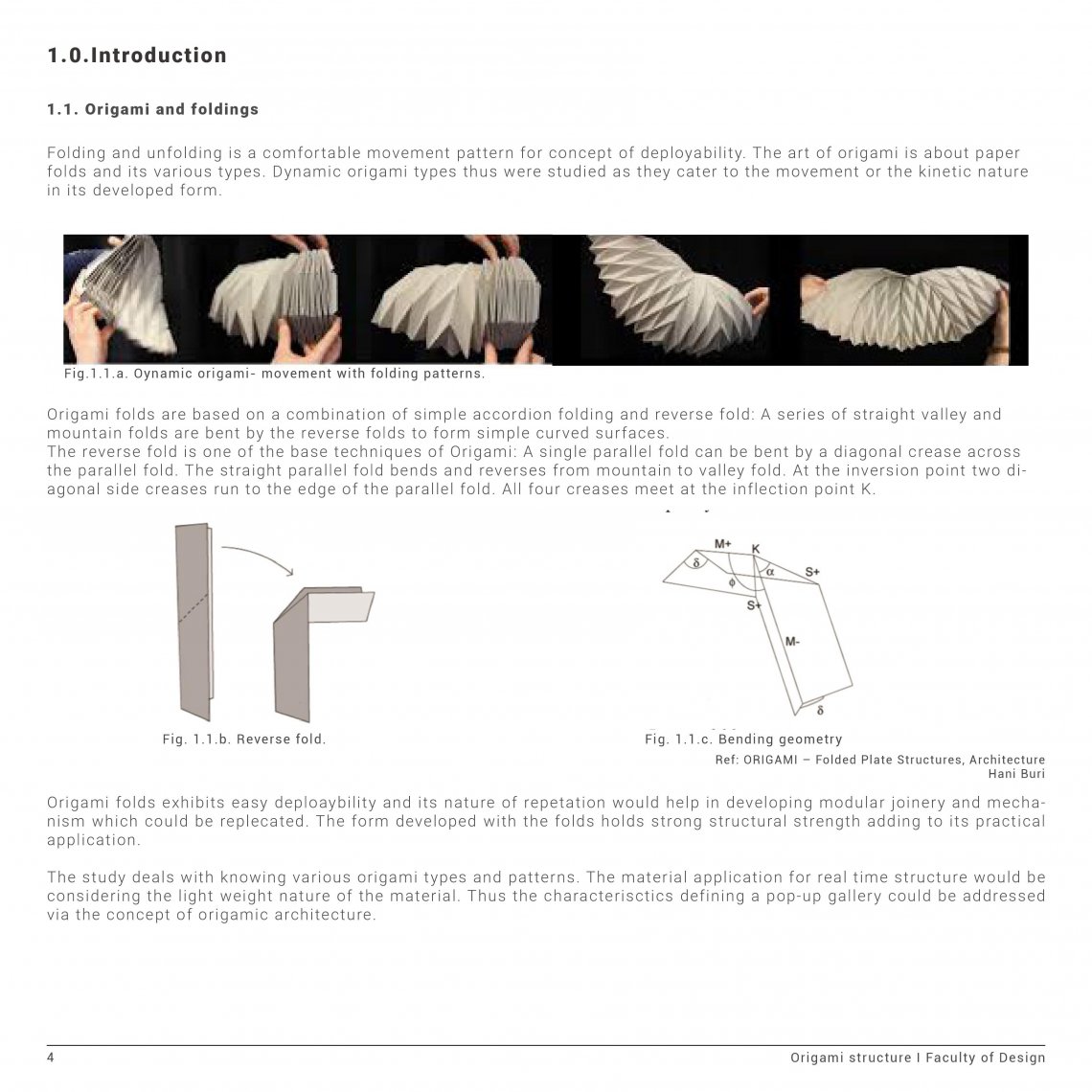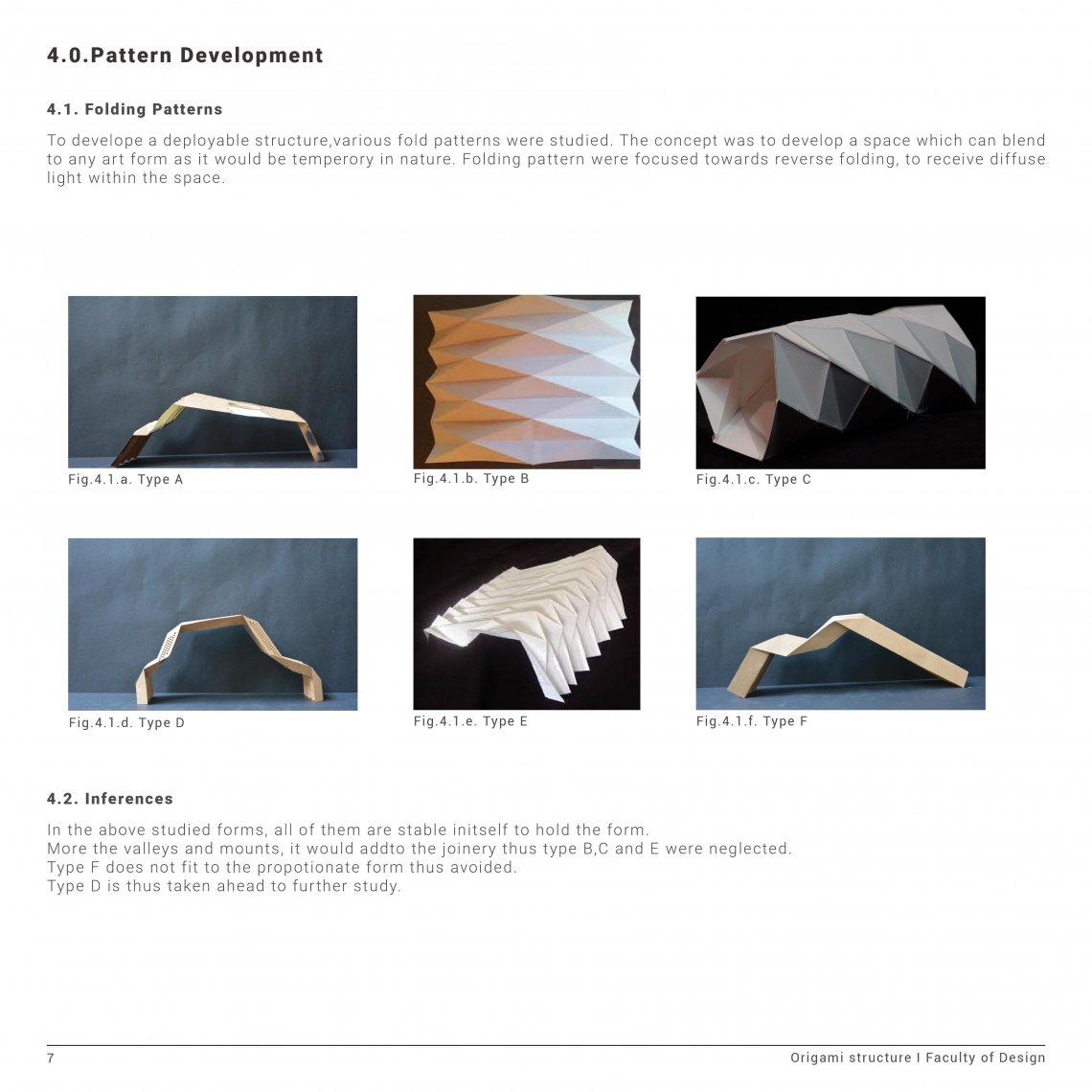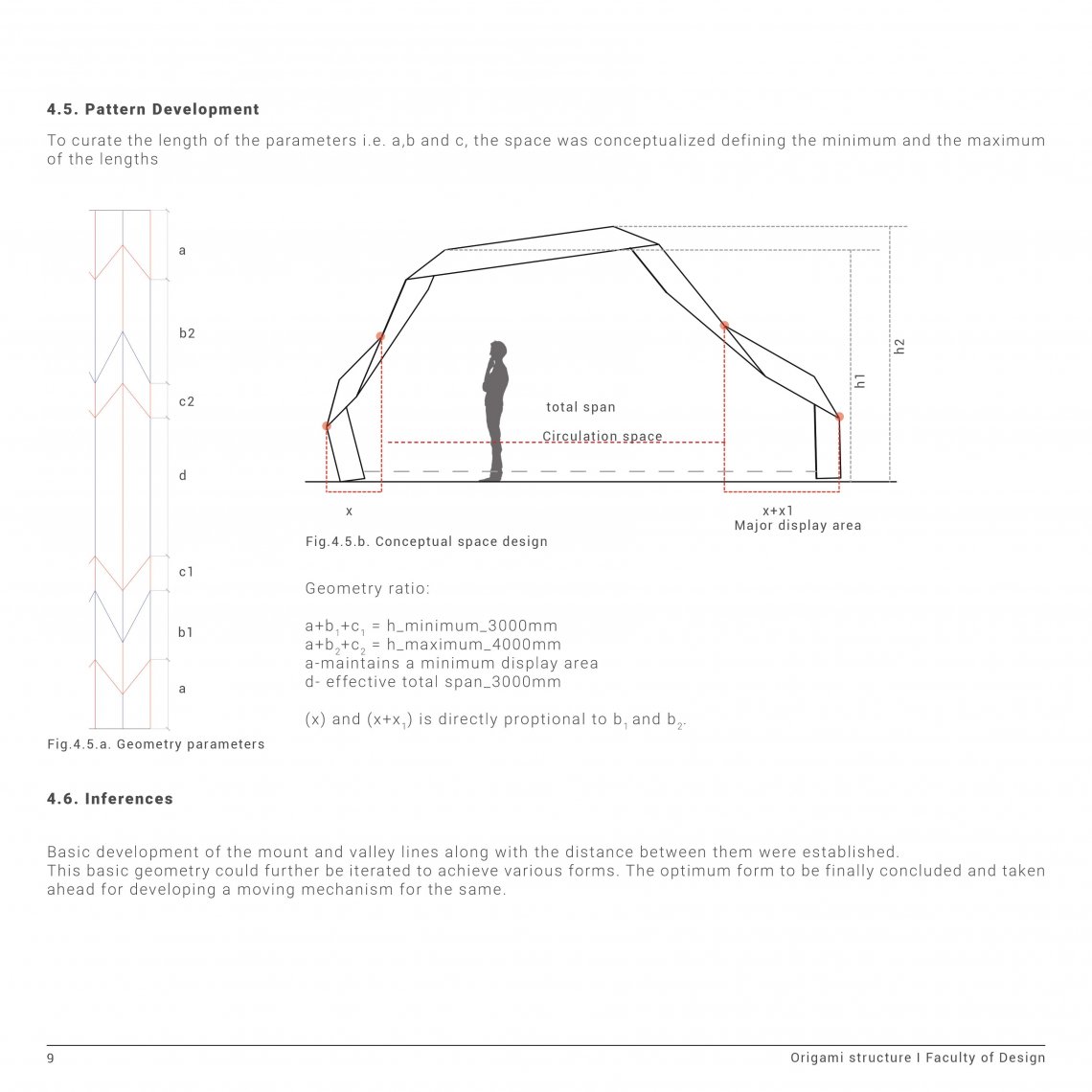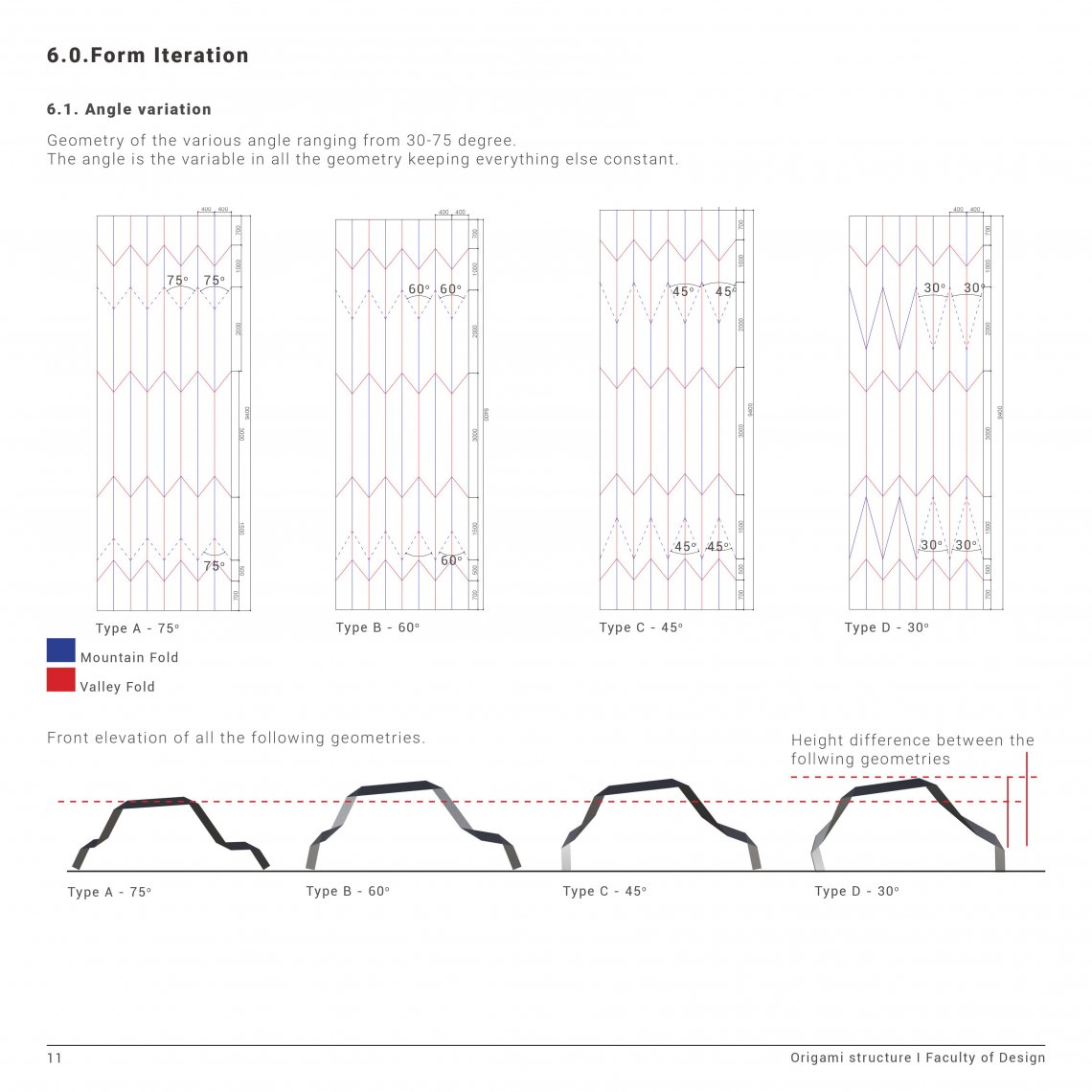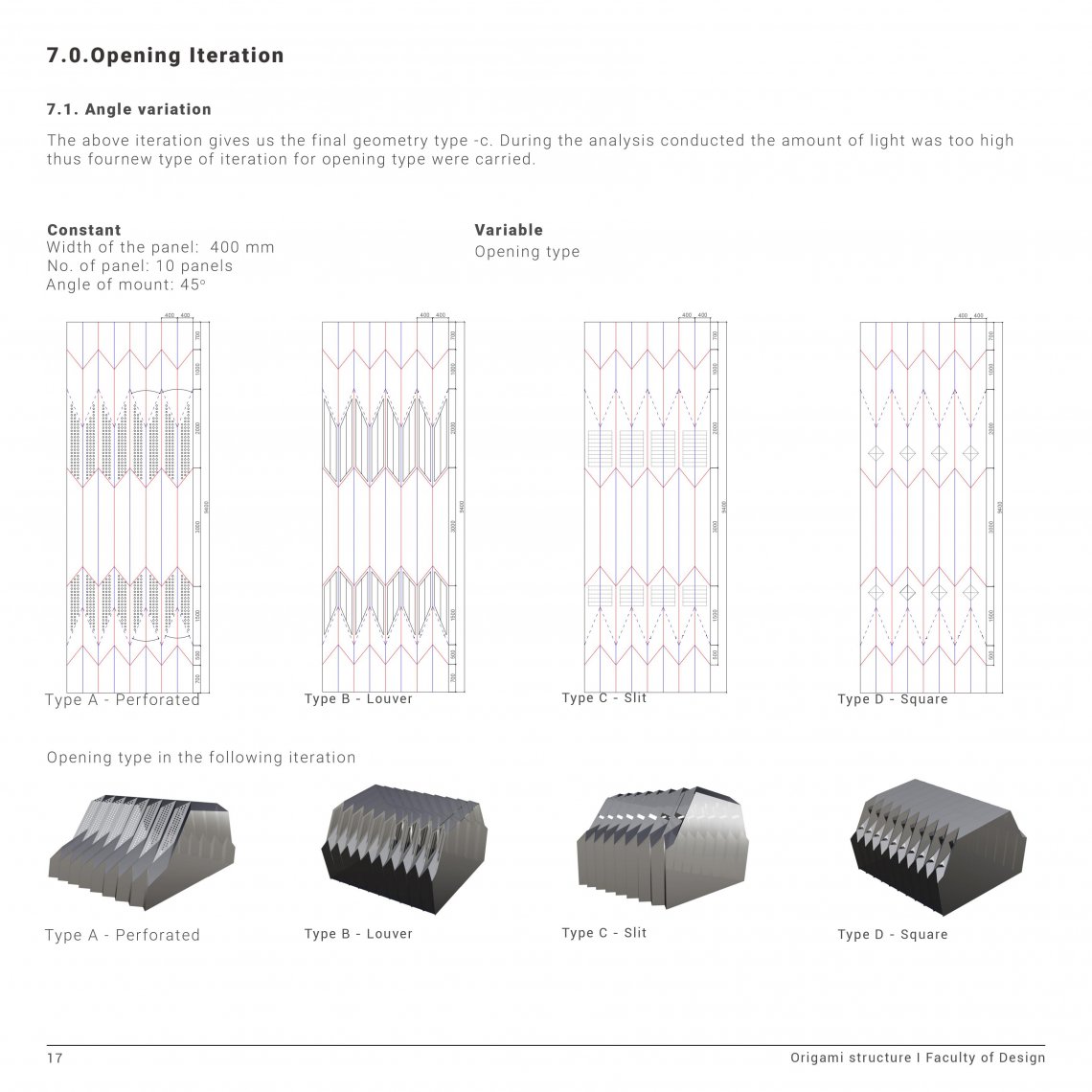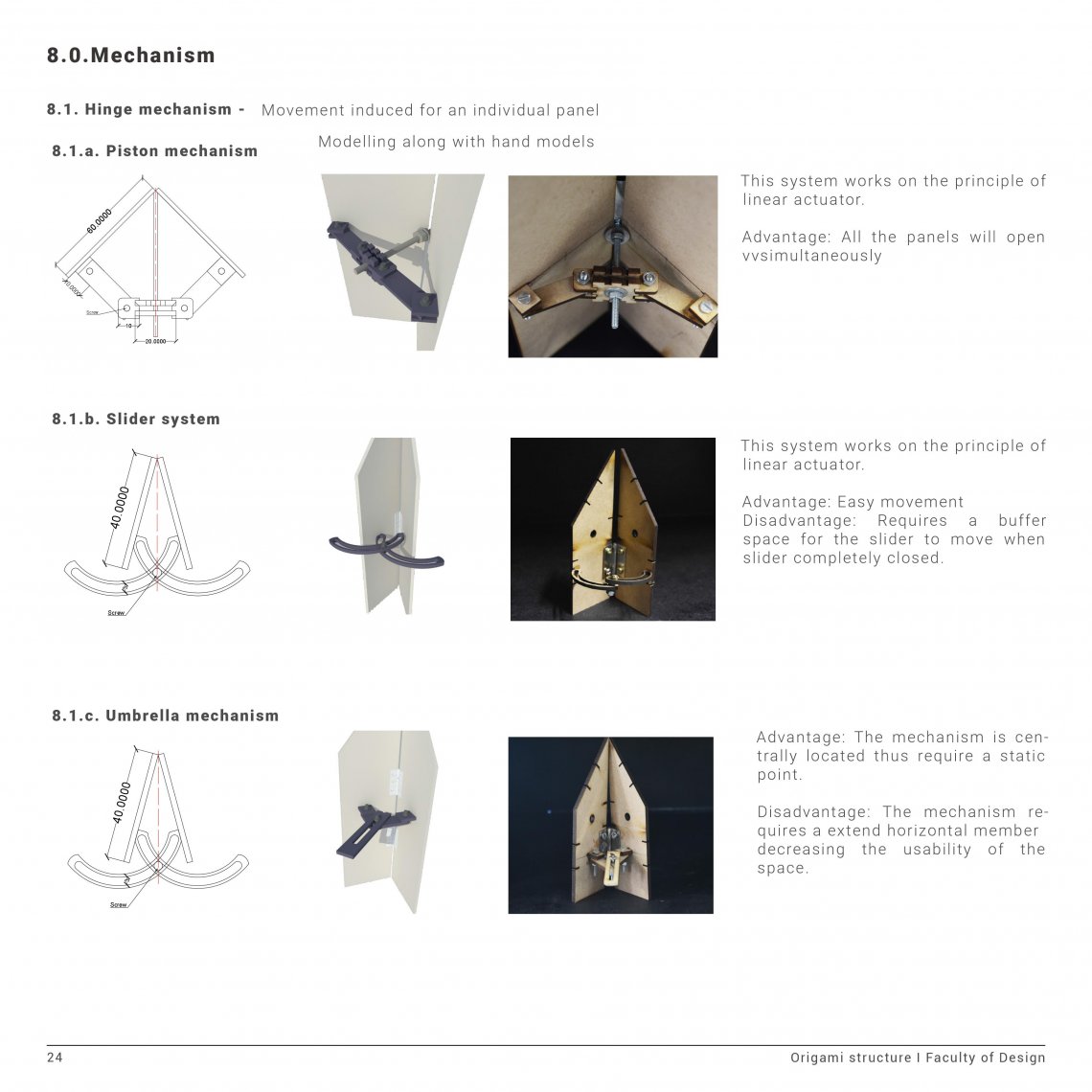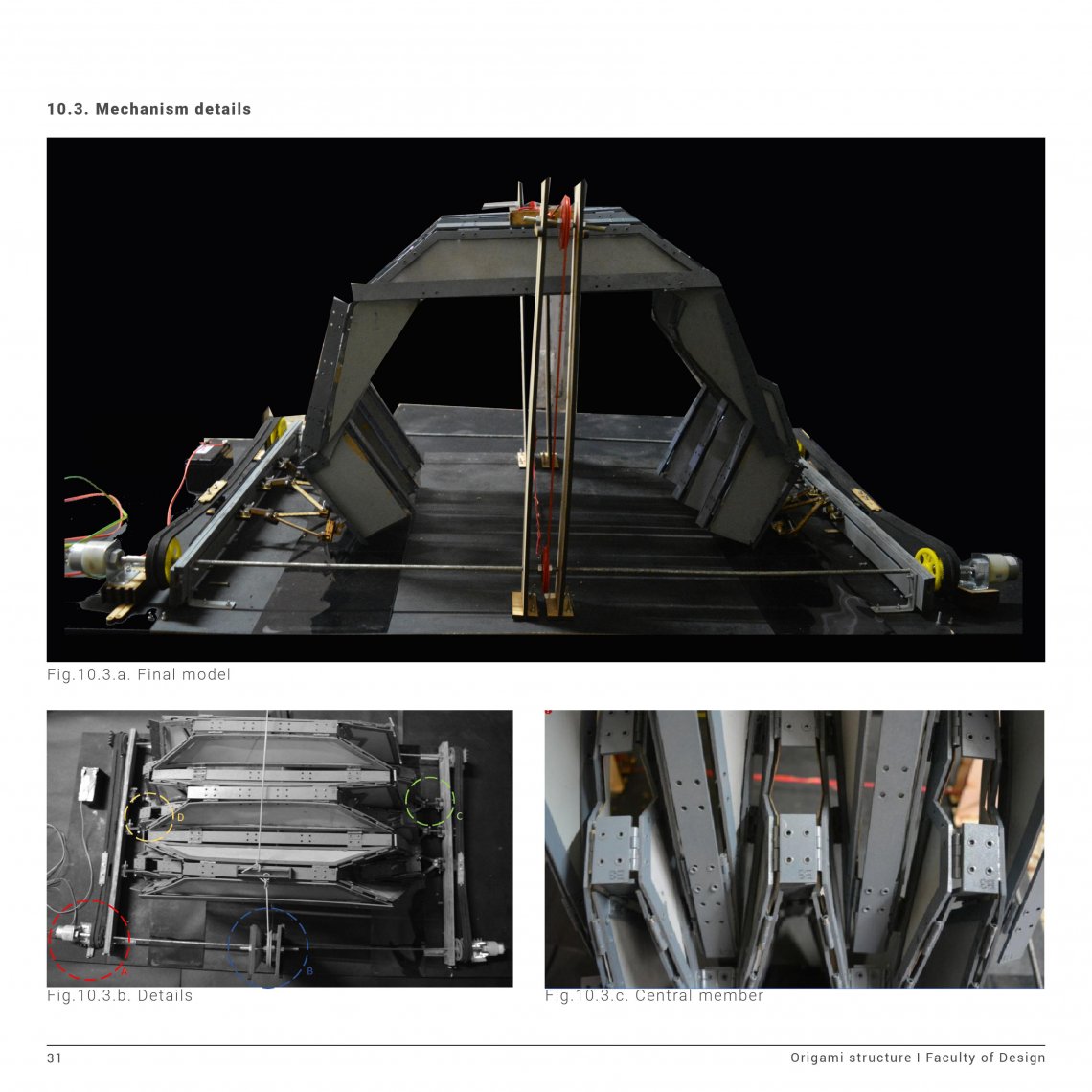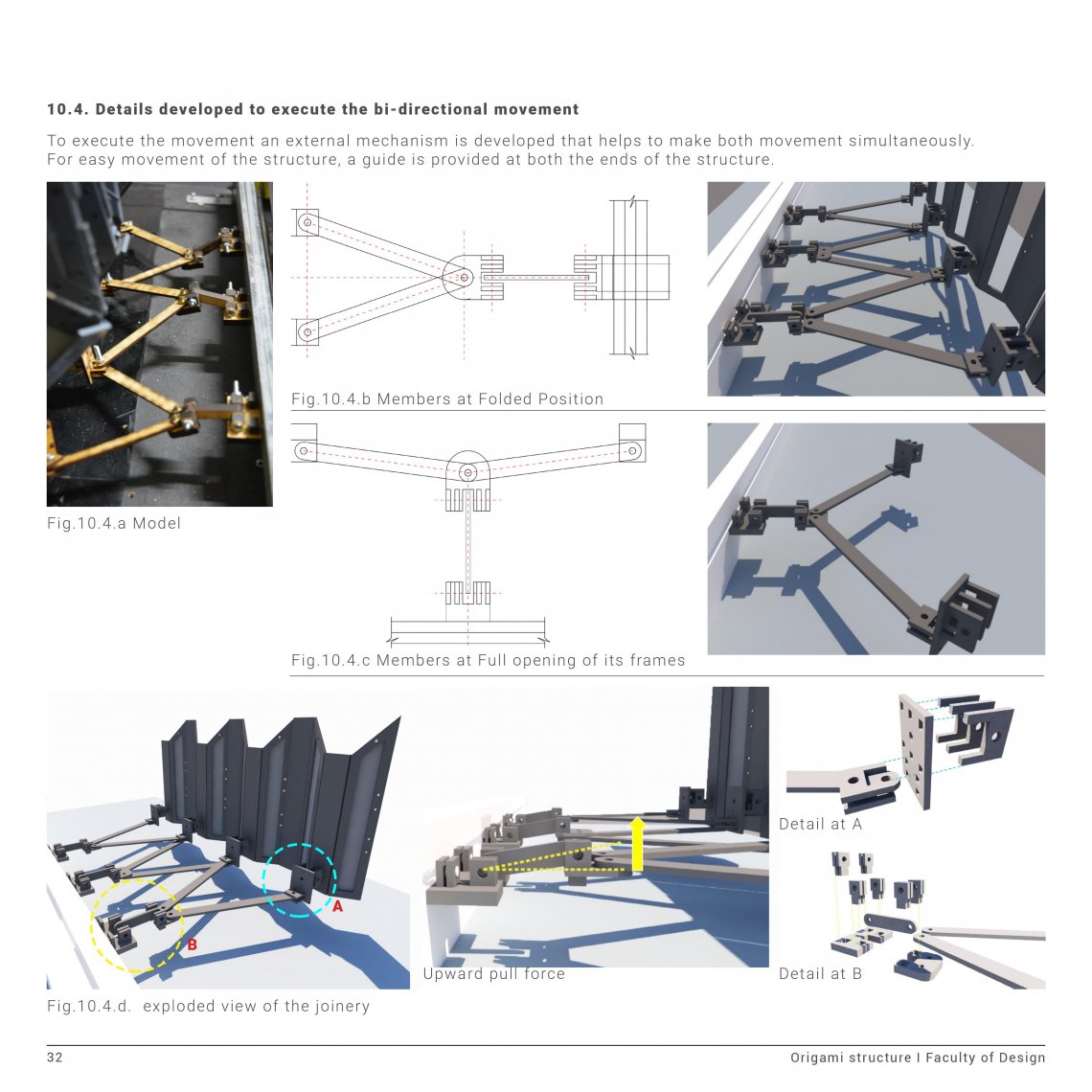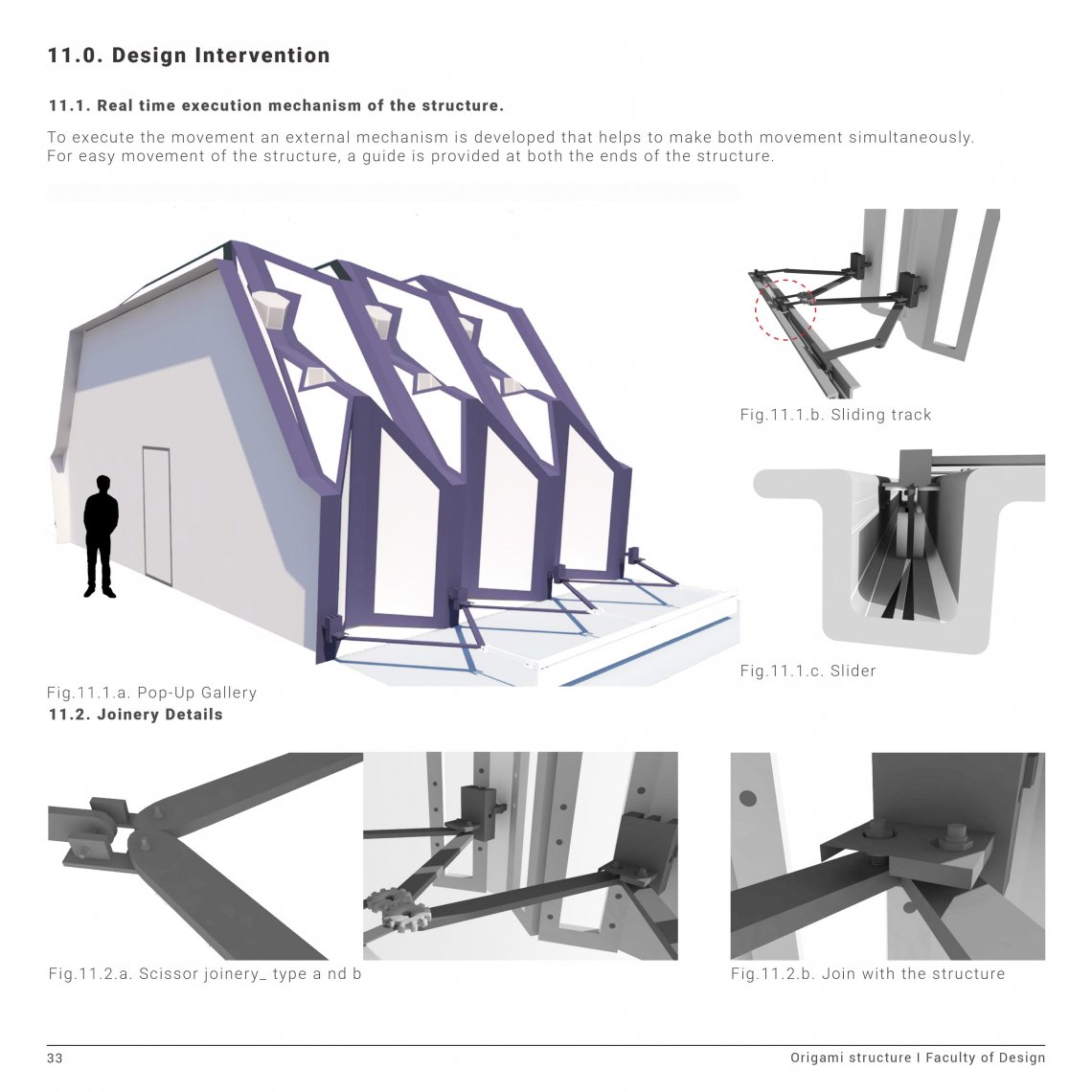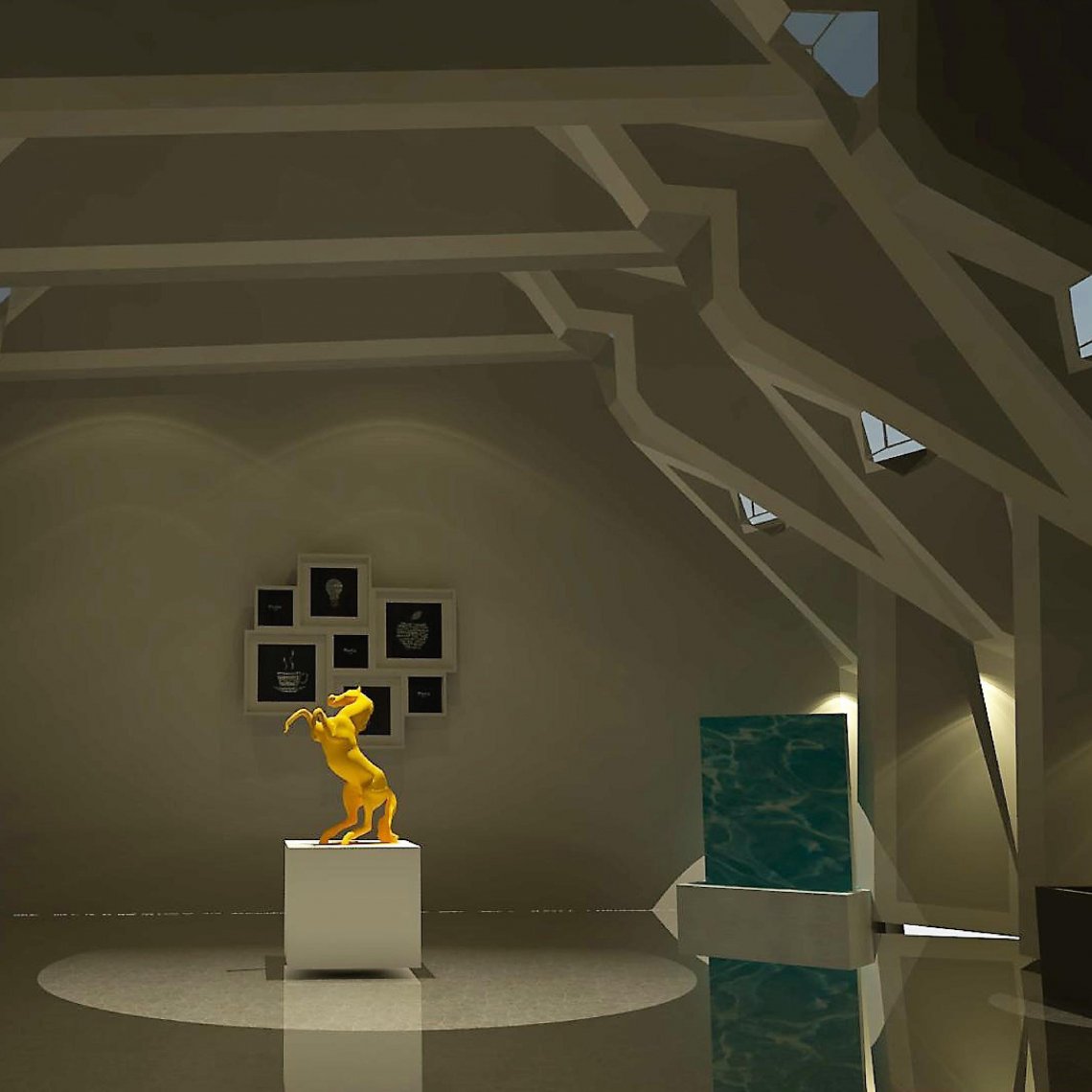Your browser is out-of-date!
For a richer surfing experience on our website, please update your browser. Update my browser now!
For a richer surfing experience on our website, please update your browser. Update my browser now!
Pop- up gallery is well described under the heads of deployablility, easy installation and kinetic nature of the structure. These characteristics were studied and explored with the concept of folded plate system. Established origami patterns exhibiting the property of folded plates were initially studied to understand the geometry and nature of folded forms. A series of folded paper models explored the formal and spatial potential of this technique. The study is conducted in various stages. The goal of the first part of our research was to identify some interesting folding patterns that have potential to be transposed to a pop up galley concept. The second part of the study aims for an analytic understanding of the chosen geometries which results in their generation by computer aided design. Thereby the generation method of the geometry should be close to architectural design processes and use devices as section and plan to define the folded plate structure. The so defined method allows creating rapidly a great number of various forms that can adapt to specific project conditions. The structure were examined on the spatial qualities of the space catering to diffused light quality, circulation space. The inferences from the above stages were clubbed to address the contextual space planning. The idea was to initiate a motor driven space, emphasizing on the easy installation of the pop-up. The concluded mechanism thus included Final form which is folds and unfolds with mechanical motor system.
